A moment of revelation that puts you on a fresh and decisive course. A simple change to your routine that restores your ambitions, your faith, your commitment. A hit of inspiration that generates a spark, that starts a fire (a metaphorical one – no wildfires here, thanks). Sometimes we go in search of these flashes of clarity, other times they strike us in the most unlikely of circumstances but, whatever their source, they can be all we need to give us a renewed and steely purpose.
This was the spirit of the briefing note that went out to Monocle’s editors, bureaux teams and correspondents this month as we asked them to locate the people, places and projects that could change our outlooks, give us all a vision for the future (well, at least 2024). They have done well with their finds.
Whether you are for or against new year resolutions, there is something about the change of date that just makes you take stock and wonder what will unfold over the coming 12 months. Now, we are not going to tell you to hit the treadmill or go on a diet but, over the following pages, we will provide some modest suggestions for starting the year right for everyone, including all the civic leaders, diplomats and architects reading this. We’ll remind you of the pleasure of seeing the world through a camera lens – and using film in it too; take you high-altitude for a different perspective on the art scene; show you how to commission the perfect home, or an embassy; and lead you through the streets of Naples to see how slow fashion has existed in the city for generations. Sartorial swagger should definitely be on the checklist for 2024.

In our Expo pages, our design editor, Nic Monisse, joins in as he looks at architecture that inspires – how buildings can be designed to elicit elevating emotions from us. As he points out, no architecture is neutral but how some structures make us feel wiser, more focused, more in awe is still something that can be hard to explain: the church that makes even those with no religion look to the heavens and feel something spiritual emanating from the soaring walls; the library that bathes us in the power and potency of knowledge shared. He’s lined up a stellar parade of edifices that should hopefully make your thoughts fly too.
Then we drop in on the new Azabudai Hills project in Tokyo, a mixed-use scheme by Heatherwick Studio that delivers peerless architecture, offers retail that raises the bar globally and has an understanding of public realm that is breathtaking. It’s somewhere every developer and city maker should have on their travel itinerary for 2024. And a word on this. At a time when we need to be building better, making places that resonate and create communities, it’s depressing how often those in charge of the budgets and decision making are reluctant to see what’s already out there – and triumphing. It’s only by venturing out into the world to seek new inspiration that we can ever hope to shrug off cloaks of mediocrity.
And, as you know, heading out into the world is something of a founding principle at Monocle and will be key in 2024. It’s striking how many media companies – big ones – have retreated to desk reporting, rewriting other people’s dispatches to give them a bit of a spin. But it’s only by being present that you get a sense of what’s really happening, what’s taking place just out of the frame. That’s why we are working on producing more events in 2024, looking to announce some very exciting physical-presence developments (sorry, I know that sounds obscure) and ensuring that our writers and editors go out and explore. It’s the only way to stay inspired.
As always, feel free to send me thoughts, ideas and inspirations. You can always find me at at@monocle.com. Have a good 2024.
Tourism: India
Holiday hot spot
India’s outbound and inbound tourism looks set to continue its upward trajectory this year. The country is projected to be the fastest-growing inbound market for many Southeast Asian countries in 2024. And, in return, Indian nationals will be able to travel smoothly in the other direction too: both Thailand and Malaysia dropped short-stay visa requirements late last year, while others, including Vietnam and Indonesia, are reportedly considering a similar waiver.
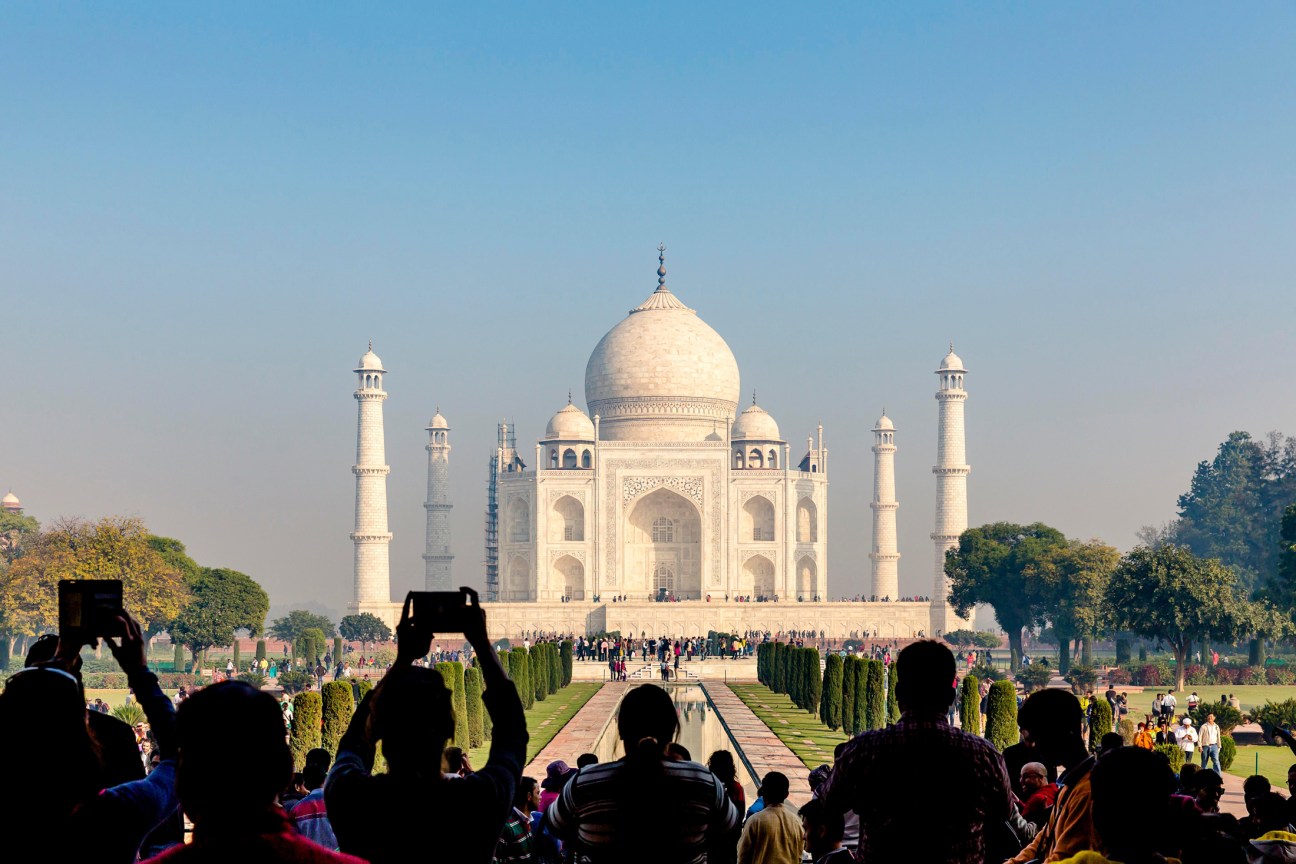
Also working in New Delhi’s favour is the drop-off in Chinese arrivals to the region. While there is still a way to go to match the numbers that arrived from China before the pandemic, Southeast Asian destinations are already beginning to introduce new direct flights to and from major Indian hubs, such as Bangalore and Mumbai. A McKinsey report, published last November, suggested that India’s outbound travel has the potential to grow to more than 80 million by 2040. These numbers are also strengthened by rising income levels nationwide and a strong economic outlook.
But at the heart of India’s tourism boom is the simple factor of ease. “Decisions are based on visas, frequency of flights and seamless connectivity, plus the choice of hotels and price-point per night,” Paul Charles, ceo of luxury global travel consultancy the PC Agency, tells monocle. And then there is another important factor: “Whether locals speak English.”
Essentially, the future looks bright. “India’s energetic, young population is definitely on the march,” adds Charles. “Destinations ignore them at their peril.”
The Foreign Desk
Andrew Miller on: Standing alone
“Strategic autonomy” was one of the vogueish buzzwords of 2023 and it needs to be one of the priorities of 2024. This is the idea that Europe – and this is very much Europe the continent, as well as the EU political bloc – should be ready, willing and able to defend itself without relying on the US. Strategic autonomy has become a pet cause of Emmanuel Macron and though his foreign policy has not lacked flights of vainglorious eccentricity, this is not one of them. Europe’s complacency regarding this matter has been, or at least should have been, jolted twice in recent years. First, in 2016, by the election of Donald Trump, a president contemptuous of America’s allies and indifferent to its obligations. Second, in 2022, by the invasion of Ukraine by Russia. It is far from impossible that by this time next year another Trumpian tantrum by American voters might result in Europe facing both of the above at once: effectively at war to its east and abandoned by its mighty ally to the west.
Europe has complacently allowed the US to pick up a hefty chunk of its defence tab for far too long. There is no reason why the continent should not become what Macron has pitched as a “third superpower”. Though experience suggests that time and energy spent on the idea of a unified EU military is probably time and energy wasted, more can be done to make Europe’s extant forces more self-sufficient and cohesive. Another idea that should become as important as strategic autonomy is interoperability. One cause of Europe’s dependence on American kit is the ease of buying off-the-shelf from the US compared to adapting purchases from the continent’s hotchpotch of competing national defence industries. It has been the great success of the EU that its members are vanishingly unlikely to fight each other again; everything should be geared towards the common threat to the east.
Strategic autonomy will be complicated – and expensive – but embracing it now will be good practice. Macron doubtless has a case when he hints that France is the natural default leader of a strategically autonomous Europe; since Brexit, France is the only country that’s a member of Nato, the EU and the UN Security Council’s permanent five. But it is just three years until voters elect Macron’s successor. There is no guarantee that it won’t be Marine Le Pen, or some other isolationist populist who might be friendlier to Russia and a less reliable ally to its more immediate neighbours. In 2024, Europe needs to start thinking about how to rely less on France as well.
Andrew Mueller hosts ‘The Foreign Desk’ on Monocle Radio. Listen live at monocle.com/radio every Saturday at midday London time or download as a podcast.
Health: Philippines
Plenty to chew over
“Here I am, yummy French fries! I’m so crispy and I smell great,” sing the cartoon chips (write Nathan Paul Southern and Lindsey Kennedy). The transfixed toddler stops wailing; his father is relieved. We’re in the Philippines, where the big story is a public-health emergency. Heart disease is the country’s biggest killer, followed by cancer and diabetes. Life expectancy here is 70, compared with 75 in Malaysia, 74 in Vietnam and 70 in Cambodia, which is twice as poor. The Philippines also has 655 McDonald’s branches (plus 1,186 of domestic rival Jollibee’s) while Vietnam has 20 and Cambodia has none. Many former colonies absorbed their occupier’s cuisine: in the Philippines, America’s legacy is junk food. Five of the world’s top 20 countries for diabetes prevalence are US territories or former colonies. In 2013, American Samoa had the world’s highest rate of diabetes and 93 per cent of the island was obese.

The US (which, at 76, has a low life expectancy for a high-income country) can’t resist foisting its food on poorer nations. The government spends $2bn (€1.85bn) annually on food aid, including buying and donating excess American crops. But this can undercut local producers. During the Afghanistan War, it is likely that the reluctance to support wheat farmers increased reliance on opium. In Laos, where 60 per cent of land is used for rice, the last thing farmers need is competition. So why does the US send American rice to its Laotian school meals programme?
As an ngo worker explained, despite an abundance of cheap, familiar, local ingredients, the programme was instructed to use American lentils, which the children, being children, refused to eat. American aid can achieve so much but pushing its cuisine on countries often leaves a bitter taste.
Nathan Paul Southern and Lindsey Kennedy are journalists and security analysts based in Cambodia.
In the basket
Swelling the ranks

The new pride of the Marinha Portuguesa’s fleet will be the 108-metre-long D Joao II, named after the 15th-century king who oversaw a previous revival of the Iberian nation’s maritime enterprise. To be built by Dutch shipwrights Damen, it looks like an aircraft carrier but isn’t – its flat deck and ramp will launch helicopters and drones. Portugal is emphasising its possibilities for marine surveillance and research but it has more pugnacious capacities if needed. It is similar to, if smaller than, Turkey’s recently commissioned drone-carrier TCG Anadolu. Just as drones serve as budget alternatives to fighter jets, so do drone carriers to aircraft carriers – the most recent aircraft carrier commissioned by a European Nato country, the Royal Navy’s HMS Prince of Wales, cost €3.7bn.
In the basket: One drone carrier
Who’s buying: Portugal
Who’s selling: Netherlands
Price: €132m
Delivery date: 2026
Politics: Americas
Boiling over
The peaceful reputation of Latin America and the Caribbean was tested in December when Venezuelans voted to exert their claim on the oil-rich Essequibo territory that comprises two thirds of neighbouring Guyana. The sabre-rattling prompted Brazil to move troops closer to its shared border with the potential belligerents and for the US to hold joint military exercises with Guyana. The Venezuela-Guyana dispute, which dates to 1899, is pending at the International Court of Justice. But despite the region not seeing a major land war since the 19th century, three territorial disputes have been lodged with the court.
Belize-Guatemala:
Settlers carved out the tropical enclave of British Honduras and harvested wood from the southern half of what is modern-day Belize, which Guatemala claims as its own. At stake? The world’s second largest coral reserve, a major tourism draw.
Colombia-Nicaragua:
The San Andrés archipelago is three times closer to Nicaragua than Colombia but the latter holds sway over the islands, much to the former’s consternation. One of the least visited corners of the Caribbean, the coral islands are a Unesco Biosphere Reserve.
Bolivia-Chile:
Landlocked Bolivia claims that Chile owes millions of dollars for downstream use of the Silala River. La Paz is still sore that it lost its oceangoing port during the War of the Pacific, which ended in 1884.
Retail: Paris
Final pages
Julia Webster Ayuso on the Olympian threat looming over the iconic booksellers on the banks of the Seine.
“There’s the Louvre, the Passerelle des Arts, the Vert-Galant garden.” Jérôme Callais is pointing to the different monuments he can see from his workplace, a book stall on Paris’s Quai de Conti. “When I finish in the evening, I walk across the Pont Neuf and watch the sunset.” For the past 400 years, booksellers such as Callais have lined the banks of the Seine. They are as intrinsic to Paris as the Eiffel Tower or Notre-Dame but in recent years their existence has come under threat. First there were the gilet jaunes protests and transport strikes disrupting their trade, then came the coronavirus lockdowns that forced them to close. Now they face an existential challenge: citing security concerns, city hall announced in July that the booksellers’ iconic green boxes must be removed in time for the opening ceremony of the 2024 Olympic Games, which will take place on the river. The bouquinistes have never left their spot and are worried that they won’t survive the move.
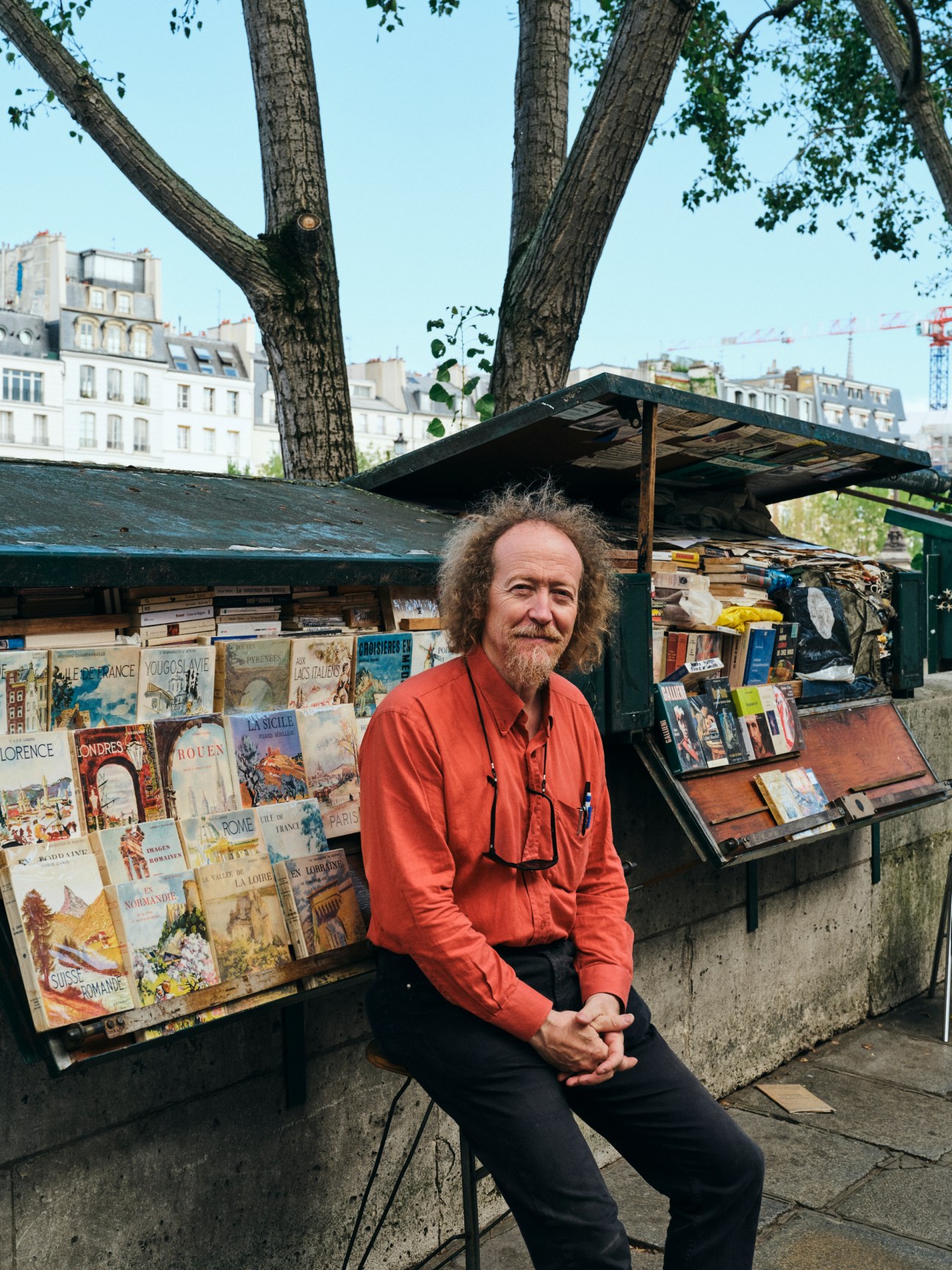
“The authorities are supposed to promote the city and its monuments, and now they want to make one of the biggest symbols of Paris disappear,” says Callais, who is the president of the Cultural Association of Booksellers of Paris. “It makes no sense.” He explains that most of the wooden boxes were set up 50 years ago or more and risk falling apart if moved. The authorities have said that they will pay for the temporary relocation of 50 per cent of the booksellers to a “literary village” in Bastille and offered to replace any damaged boxes. But the bouquinistes don’t think that this is viable and it’s unclear when they will be allowed back – if at all. Callais, who makes no more than a few dozen euros a day from sales, says that depriving the bouquinistes of their place by the Seine could deal a final blow to those who are already struggling. “Nobody does this for the money,” he says. “I would make much more if I stayed at home and sold my books online. But this is a different ethos: you meet people, you share things, you watch the world go by. Sitting in front of a computer, that’s not life for me.” When monocle visits on a sunny Monday afternoon, an elderly woman stops to reminisce about her youth, a student lingers for a chat about music (Callais had a previous career as a double-bass player) and a book dealer arrives to offer his selection of old editions. Most have heard the news and offer their support.
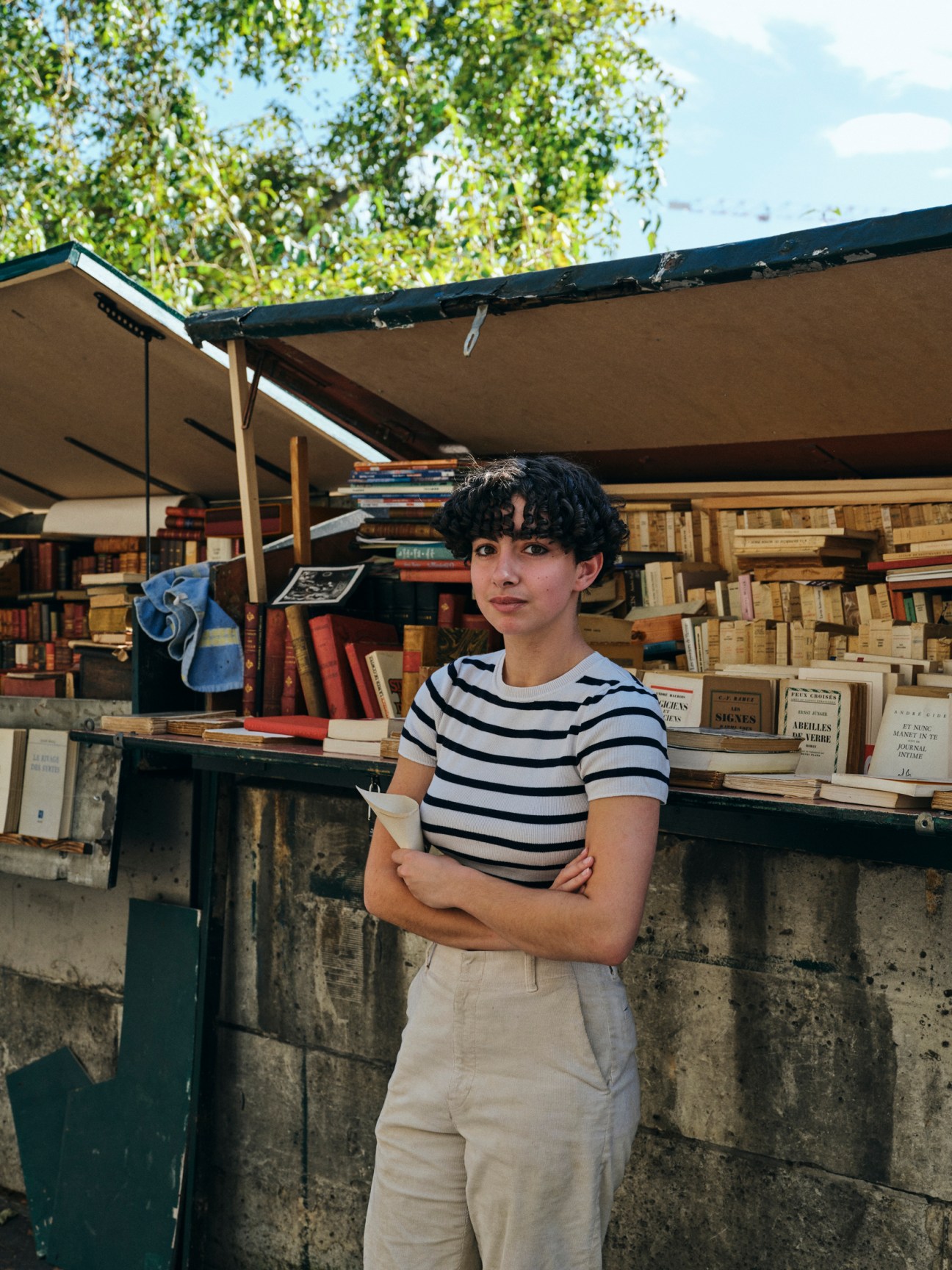

The bouquinistes have survived previous attempts to ban their practice, including by Baron Haussmann, the architect of modern Paris. Today the 233 sellers don’t pay rent but are assigned a space by local authorities where they can set up five boxes, which they must open at least four days a week (if weather allows). The majority of what they sell must be made up of secondhand books, prints or magazines, though they’re also allowed to sell some souvenirs. Every bouquiniste is a bibliophile and some are specialists. All are a human lifeline in the age of Amazon.
On the other side of the bridge, Véronique sells mostly comics, and a few steps upstream from her, Gilles Morineaux focuses on rare books. Though most bouquinistes are retirees, young people also see the profession’s appeal. Among them is 19-year-old history student Fanfan Derai, who works as an assistant on Morineaux’s stall, a role known as an ouvre boîtes (“box opener”). “It’s a fantastic profession,” she says. “You meet all kinds of people.” Could she see herself here in the future? “I would like to have a different career first, and then return to the quais,” she says. Hopefully the bouquinistes will still be here.
Julia Webster Ayuso is a journalist and Monocle contributor based in Paris.
Only the top of the iceberg that is the Oslo Opera House can be captured in a photograph: much of it is subterranean. Designed by architecture firm Snøhetta and completed in 2008, this is the workplace of more than 600 permanent staff members, who keep busy rehearsing Petipa pas de deux, belting out Verdi arias, stitching silk-and-sequin dresses and ensuring that the Norwegian National Opera & Ballet’s 300 or so yearly shows run smoothly. The people milling about the building’s public roof terrace, sun-tanning, taking photos and even (when conditions allow) downhill skiing are also important pieces of the puzzle.
“To an extreme degree, it has helped us to build pride,” says Ingrid Lorentzen, former ballerina and one of the artistic directors who lead the institution’s programme. “We’re a young nation when it comes to culture.” The Norwegian Opera was founded in 1959 and was long housed in a modest theatre in the city centre. But everything changed when Snøhetta was commissioned to design a new building and shipped 36,000 pieces of white marble from Carrara to Oslo’s industrial harbour. Since moving in 16 years ago, the company has grown into a world-class institution renowned for a daring repertoire and inclusive attitude.
By welcoming everyone into the building (and on top of it), Oslo Opera House flipped the idea of what such a stereotypically elitist institution can be. That said, even more thought was put into the interior: the oak-panelled main stage has some of the world’s most advanced acoustics and scenography. “All of the artists we get here think big,” says Lorentzen, noting that their workshops build sets that few theatres can match. “We have huge productions that can’t go anywhere else.”
Asked how it feels to stage shows inside one of Norway’s top tourist attractions, Lorentzen recounts a conversation with Kjetil Taedal Thorsen, co-founder of Snøhetta. “He said that the building is nothing without its content,” she says. “Without the theatre, it would be a monument. Monuments are dead. This is a living house.”

The institution’s three leaders
The Norwegian National Opera & Ballet is led by a trio who oversee its opera, ballet and orchestral departments. Former prima ballerina Ingrid Lorentzen and mezzo soprano Randi Stene will be joined in August by Edward Gardner, a conductor extraordinaire from London who is currently serving as musical advisor. With creative remit over their respective fields of expertise, they work with a 600-strong team to put a show onstage nearly every night of the week.
From the back row to the front, left to right:
1.
Stella Johanna Rømcke
Front-of-house manager
The marble foyer is Stella’s domain. Her high heels make her easy to spot.
2.
Magnus Staveland
Soloist, Norwegian National Opera
The tenor grew a moustache for ‘La Traviata’. He’s thinking about keeping it.
3.
Edle Stray-Pedersen
Conductor, Children’s Chorus
Her secret to making a choir of five- year-olds sing in tune? “Never give up.”
4.
Edward Gardner
Musical director
The conductor whisks between the London Philharmonic and the Operaen.
5.
Knut Breder
Manager, Ballet School
Decides which talented toddler should go to the country’s best ballet school.
6.
Ingrid Lorentzen
Artistic director, Norwegian National Ballet
Started out at the Operaen as a dancer.
7.
Helle Sørbye Larsen
Chief producer, Norwegian National Ballet
The ballet teacher-turned-economist has productions for 2029 now on her desk.
8.
Meliha Beglerovic
Head of workshops
Trained as an engineer, her job is to find a way to realise directors’ wildest visions.
9.
Lars Kolstad
Stage manager, producer
Has three decades’ experience giving performers the cue to take their places.
10.
Kari Ulfsnes Kleiven
Chorist, Norwegian National Opera Chorus
Don’t stand too close when the soprano warms up her higher octaves.
11.
Catharina Chen
First concertmaster, Opera Orchestra
Catharina plays a Vuillaume and a Stradivarius.
12.
Yolanda Correa
Principal dancer, Norwegian National Ballet
The Cuban prima ballerina pirouetted her way from Havana to Oslo.
13.
Jahn Magnus Johansen
Leader of the Norwegian National Ballet
2 Just got back from a tour of Norway scouting for ballet talent.
14.
Randi Stene
Opera director
Sometimes still takes the stage herself.
15.
Jane-Eve Straughton
Administrative leader, the Norwegian National Opera
The organisational whizz cut her teeth at the English National Opera.
16.
Kristina Bell
Head of sewing workshops
The Operaen’s petites mains makes fairy tales come to life.
As guests nibbled on Icelandic lamb and sipped Icelandic vodka at a trendy Seattle cocktail bar, an Icelandic DJ spun Nordic tunes. The occasion: a vip reception for Taste of Iceland, a travelling roadshow that immerses key markets in the country’s food, culture and design. Among the ambassadors? First lady Eliza Jean Reid.

That Canadian-born Reid, who has been married to Icelandic president Guðni Th Jóhannesson since 2004, would become one of Iceland’s soft-power envoys was as unexpected as a Viking ambush. When she met her future husband while they were students at the University Oxford, her knowledge of his homeland was limited. But as their courtship progressed, and with Jóhannesson’s daughter living in his native country, there was a decision to be made. “If we wanted to be together, we had to go to Iceland,” says Reid. When she made the jump across the North Atlantic, she was determined to do so on her own terms. That meant finding a job, making friends and integrating into the community. “I moved to Iceland for him,” she says. “I wanted to stay there for me.”
Learning the Icelandic language was key to Reid’s assimilation. She studied at the University of Iceland in the evenings while working in marketing for a software start-up. After two years of study and years of language immersion drawn from raising a family in Iceland, Reid can now comfortably give television and radio interviews in the language.
She needed those skills in 2016, when in a mere seven weeks her husband went from academic political pundit to president – a ceremonial head-of-state position – thrusting her into the national spotlight. As a foreign-born Icelander, she has raised the immigrant population’s profile in a country stereotyped for its ethnic homogeneity.
There is no formal role for the first spouse in the Icelandic constitution. But Reid insisted that she would not be “arm candy for my husband”. She only accompanies him to formal occasions, such as the September golden jubilee for King Carl xvi Gustaf of Sweden, if there is a dedicated role. “I wanted to confound expectations about female spouses in politics,” she says.
The CV
1976: Born in Ottawa.
1999: Graduated with a master’s in modern history from the University of Oxford.
2003: Moved to Iceland.
2004: Married Guðni Th Jóhannesson.
2014: Co-founded the Iceland Writers Retreat.
2016: Became first lady.
2017: Named United Nations special ambassador for tourism and the sustainable development goals.
2022: Published her first book, Secrets of the Sprakkar: Iceland’s Extraordinary Women and How They Are Changing the World.
This is why much of her busy travel schedule is for her own agenda. In addition to her tourism promotion with Business Iceland, which runs Taste of Iceland, she is a UN special ambassador for tourism and the sustainable development goals. In 2014 she co-founded the Iceland Writers Retreat, drawn in part from Reykjavík’s status as a Unesco City of Literature. Eight years later, Reid published a book: Secrets of the Sprakkar: Iceland’s Extraordinary Women and How They Are Changing the World.
Last year those various hats led her to touch down in Chicago, New York and Berlin in one month alone. “These are ways I can work to enhance Iceland’s presence on the world stage,” she says.
As the subject of her book suggests, Reid is passionate about Iceland’s hard-earned reputation for gender equality. She was pleasantly surprised that no one batted an eyelid when her first employer’s board president breast-fed while chairing a meeting. Women hold leadership roles across society, from the bishop of Iceland to the national police commissioner.
That said, those gains didn’t stop her joining the Women’s Strike in October to ensure that the world’s most gender-equal country doesn’t backslide. She will continue to investigate these themes in her second book, a mystery novel. It will be set in Iceland, of course. And, true to form, it will have a strong female lead.
The list: Tips for 2024
Word to the wise
Tyler Brûlé on six things that should be on your radar this year.
Just in case this jam-packed issue doesn’t sate your appetite for inspiration, here are a few more things to see, do or buy.
1.
If you’re planning to stop off in Lisbon this spring or summer, I recommend an upper-floor suite at the Hotel das Amoreiras. Owner Pedro Oliveira has done a fine job, not only with the lighting but also with the comfy banquettes, which have the perfect backrest angle.
2.
There’s a good chance that we’ll see you during Salone del Mobile in April. If you’re hesitating because of the hotel prices, why not stay in Lugano and take the train into Milano Centrale? Hotel Gabbani is near the station and affordable. Sign up to our newsletters to keep on top of our events during the fair.
3.
Air France is expected to unveil its new First Class concept soonish. Early sketches suggest that it wants to outdo Lufthansa and Swiss with an evolution of its much-loved four-seat cabin.
4.
Wardrobe looking a bit thin? Try Heschung for footwear, Ripa Ripa for lido essentials, Yindigo AM for boxy cashmere cuts, Tembea for canvas holdalls and Howlin’ for hits of colour.
5.
If you want a runabout, the Suzuki Ignis is quickly becoming the vastly improved answer to the Fiat Panda.
6.
French TV’s morning-news wars have resumed. tf1 has launched a crowded, overlit programme to take on France 2’s Télématin and bfmtv’s flagship morning show. If you’re not familiar with France’s take on morning TV, it’s worth a peek. Good Morning America it most certainly isn’t.
Chequered flag
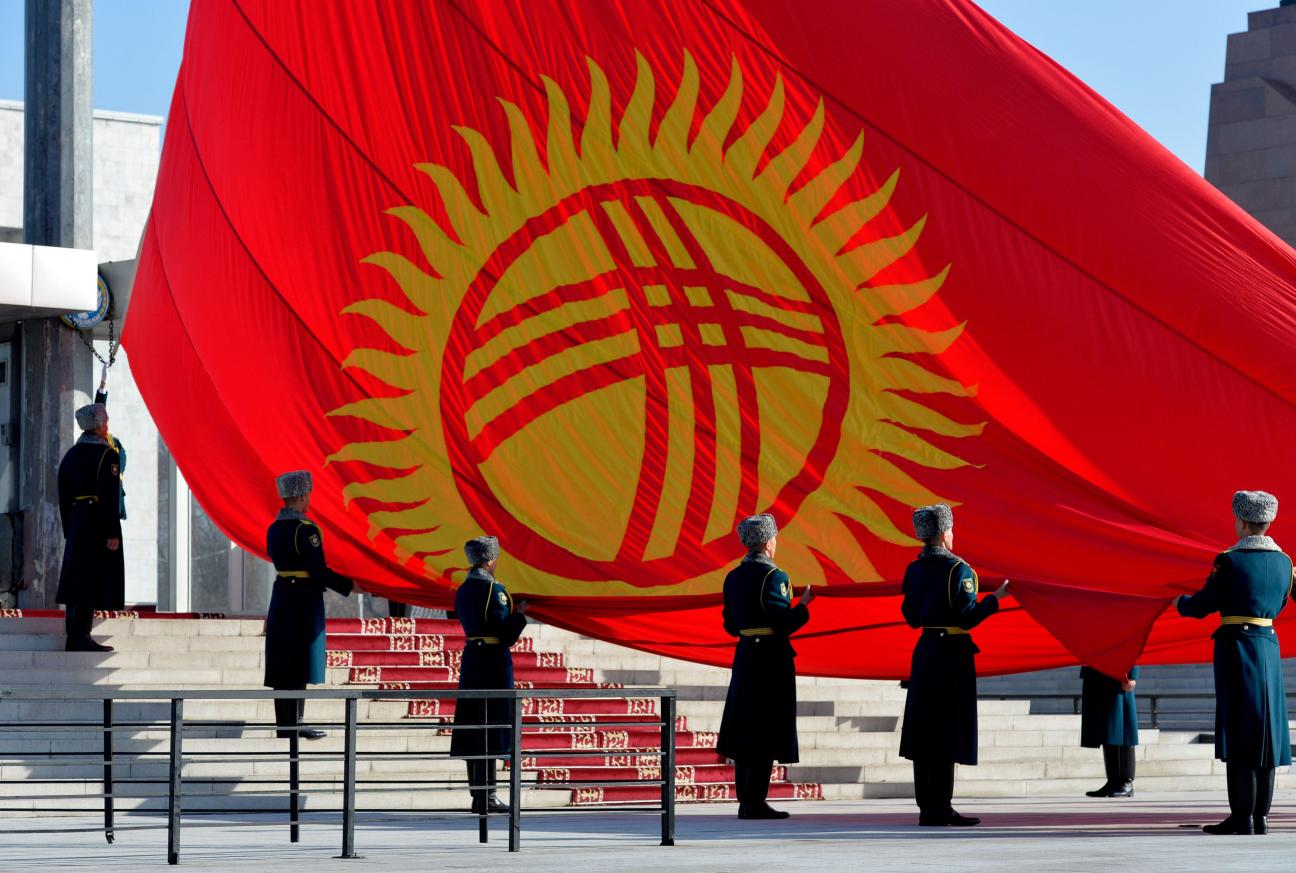
One look at Kyrgyzstan’s rankings in the UN’s Human Development Index or Transparency International’s Corruption Perceptions Index will lead the reader to conclude that the country has bigger issues than the curvature of the rays of the sun depicted on its flag.
Some Kyrgyz lawmakers believe otherwise. They’ve become concerned that the sun, which has adorned their national banner since 1992, looks more like a sunflower. In the Kyrgyz vernacular, “sunflower” is also an insult, which seems like something someone should have noticed at the time.
Kyrgyzstan’s president, Sadyr Japarov, has declared that the wobbly rays are “one of the reasons why this country cannot get off its knees”. It could be argued that Japarov’s own corruption, oppression, nepotism and populist tub-thumping might be more culpable – and that picking a row over the flag is some sort of diversion.
The plan, then, is to straighten the rays, though this might not solve the problem. A subsidiary argument rages about the yurt shown cradled within the sun, which some believe is depicted with insufficient slats in its roof.
Let sleeping seals lie

Australians grow accustomed to bizarre interactions with unusual wildlife, cohabiting as they do with a menagerie of fauna that’s belligerent and eccentric. Australia is possibly the only country on Earth where a boss will be inclined to believe the employee who claims to be delayed by an enormous seal blocking their driveway.
Exactly this obstacle was recently faced by a citizen of the state of Tasmania, whose vehicle was hemmed in by a 600kg southern elephant seal that had chosen her front yard for a snooze. The seal, christened Neil by poetic locals, has previously accrued his fair share of online fame by sunning himself on beachfront roads.
Another thing that Australians grow accustomed to, if they wish to survive to an appreciable age, is leaving the native creatures alone. Neil’s host would have been doing entirely the right thing if she had taken his arrival as the cue for a day off – or possibly a sign from the universe to go back to bed herself and call it a duvet day.
Reporting from…
Monocle has a network of correspondents in cities around the world. Our brief updates here include news on London’s rising skyline, a pioneering opening in LA and a Japanese airline’s new pet project.
London
Tower surge
The City of London’s skyline is continuing to sprout glassy new towers. The financial district expects 11 of them to be built by 2030 with interest in office space from technology firms as well as banks. For all the talk of hybrid working, the City is still bucking trends.
Los Angeles
Open for viewings
A mile-long open-air art museum is due to open this month, with Sankofa Park, designed by Perkins & Will, as its centrepiece. A welcome investment in South Central LA, the project, Destination Crenshaw, is billed as the world’s largest collection of public art by black US artists.
Tokyo
Air of the dog
Some good news for the Tokyo bureau’s canine contingent: Japanese airline Star Flyer now allows small dogs (and cats) on all domestic flights. Pet tickets cost ¥50,000 (€316) and owners are allowed to sit next to their pooches in the back row.
Slippery slope

If there is one thing everyone knows about Switzerland, it is that everything in the country is superbly maintained and fastidiously clean to the extent that any second-class train carriage could be instantly repurposed as an operating theatre. Startling, then, to learn that some Swiss ski lifts have descended into dishevelment.
Dwindling snow has forced the abandonment of at least 65 such installations. Some have been vandalised, appropriated by squatters or turned into party venues. It seems an affront to Swiss stereotype. Here are three other portents of national decline which the cantons concerned would do well to watch.
1
German cars
It would grievously damage Germany’s image if the production lines of Mercedes-Benz, bmw and Audi began rolling out unsightly backfiring jalopies.
2
Italian food
Widespread rethinking of brand Italy would ensue should travellers start noticing that every meal suddenly wasn’t the best thing they had ever eaten.
3
French abruptness
Visitors who descend on France for the Paris Olympics this summer will all leave disappointed if at least one waiter doesn’t roll their eyes at their pronunciation of “bourguignon”.
Know your stuff
Norwegian technology start-up Add + Space aims to be the new Airbnb – but for stuff. Users log their excess items on an app and the firm will send someone to scoot them all away. The service’s quirky orange bicycles can already be seen in New York.
In addition to traditional storage units being used to house these items, private individuals can let any extra square footage as somewhere to store your paraphernalia. You can then keep track of your things through a “virtual closet” on the app. And at the press of a few buttons, your items will rematerialise on your doorstep.
It sounds like a winning formula: Airbnb-style renting combined with seamless delivery reminiscent of a takeaway service and an AI-powered gimmick. However, though turning your closet into everyone else’s might be a brilliant business plan, ultimately this makes cities more hospitable for commodities than for people. While being ostensibly new, this innovation feels like more of the same.
Strained relations
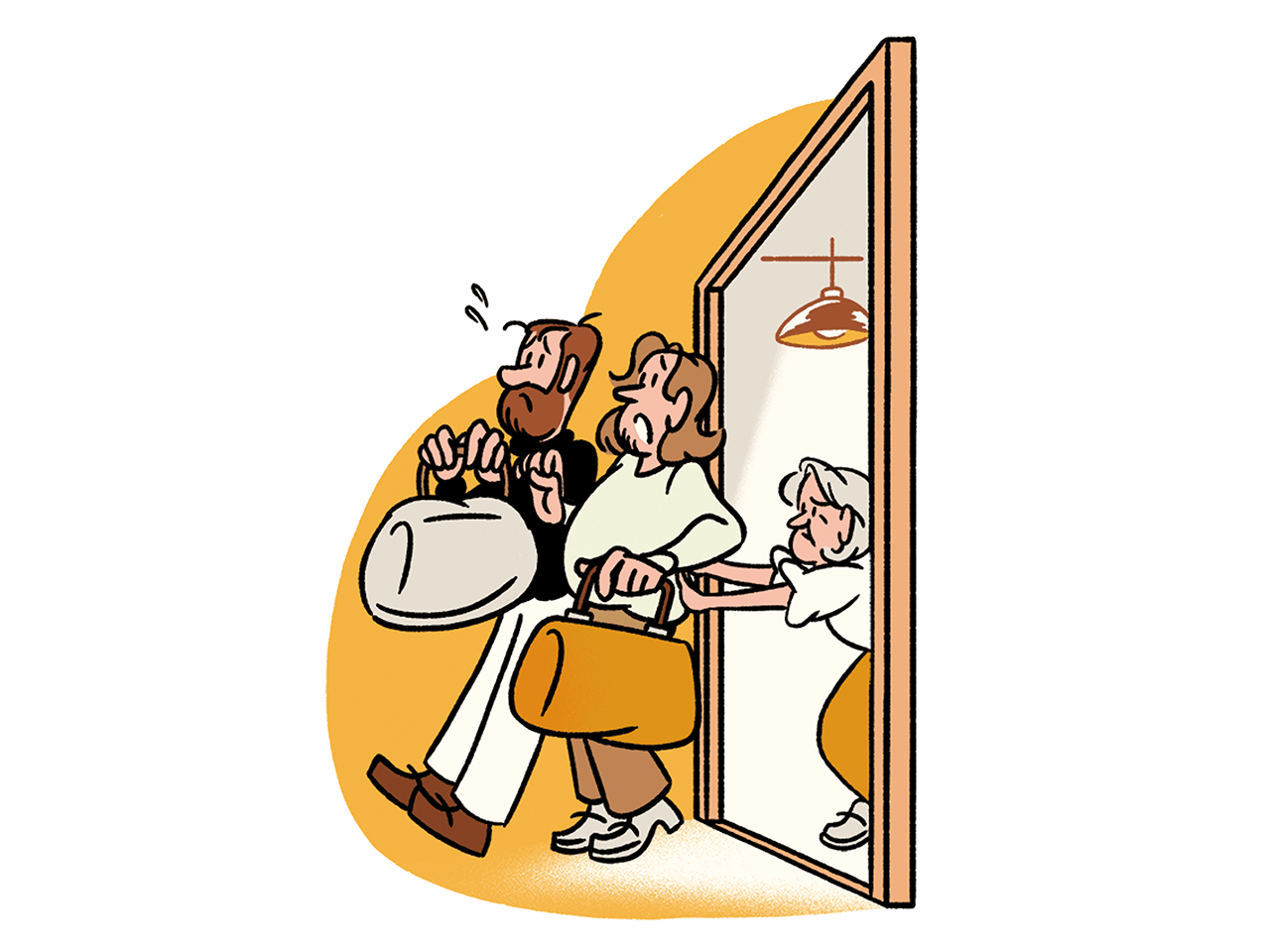
Italy has a reputation for being family-oriented, with many generations happily living together under one roof. But a 75-year-old mother from Pavia recently went before a judge to kick her children out of the nest. The woman took her sons, aged 42 and 40, to court to force them to move out, after they declined to leave. The judge ruled in her favour, issuing an eviction order.
The bamboccione (big baby) who refuses to become independent is a part of Italy’s perception of young people. In reality, a tough economy and an unsteady job market are keeping young Italians in their family home longer than they would like. A 2022 Eurostat study found that Italians move out on average at age 30, compared with 23 in France and 21 in Sweden.
Correspondent’s view: Washington Wheel of fortune

On a street outside the campus of the US National Institutes of Health, a centre of scientific and medical excellence on the outskirts of Washington, an advertising sign swaying in the wind offers tarot readings. Not far away, a thrift shop that has gone out of business has been replaced by a hastily put-together shop promising psychic consultations.
By my count, it’s the fourth such offering in a few blocks in my Washington neighbourhood. The renewed fascination for paranormal assistance is part of a wider trend that has been sweeping across the US of late. According to data from research group Ibis World, the psychic-services industry in the country was on course to reach record revenues of more than $2.3bn (€2.1bn) in 2023 – a significant increase from $1.9bn (€1.75bn) just a decade ago. Ibis World speculates that this is related to a shift away from organised religion towards New Age spirituality in some sections of US society (more than 25 per cent of adults in the country now claim to see themselves as spiritual, rather than religious in the traditional sense), as well as aggressive online marketing on social media.
Fears for the future also evidently loom large, particularly among younger generations. A recent study found that one in four millennials in the US turn to fortune tellers for financial advice, while economic and political uncertainty are pushing people towards unorthodox sources of solace. According to polling by Yougov, more than 20 per cent of Americans have consulted a medium, psychic or fortune-teller at some point in their lives.
Perhaps it’s unsurprising that so many are seeking guidance wherever they can. With political chaos, deep polarisation ahead of this year’s presidential elections and the potential return of Donald Trump, everybody wants to know what’s around the corner.
“It’s not at all clear what will happen,” says Michael Shermer, publisher of Skeptic magazine. “When there’s uncertainty and anxiety, and society is a little unstable, belief in conspiracy theories and the paranormal goes up.” Perhaps it’s only a matter of time before US politics-watchers swap their pollsters for palm readers.


